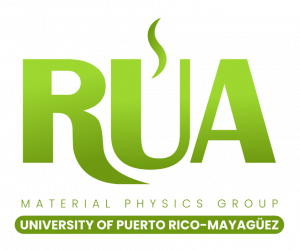Fabrication Facilities
Pulsed Laser Deposition
PLD system # 1. Used mainly to deposit oxide materials. Includes 4-target revolving turret with computer-controlled stepping motor for deposition of multilayers, two mass flow controllers, residual gas analyzer, and PID-controlled substrate heater capable of reaching 800°C in O2 atmosphere.
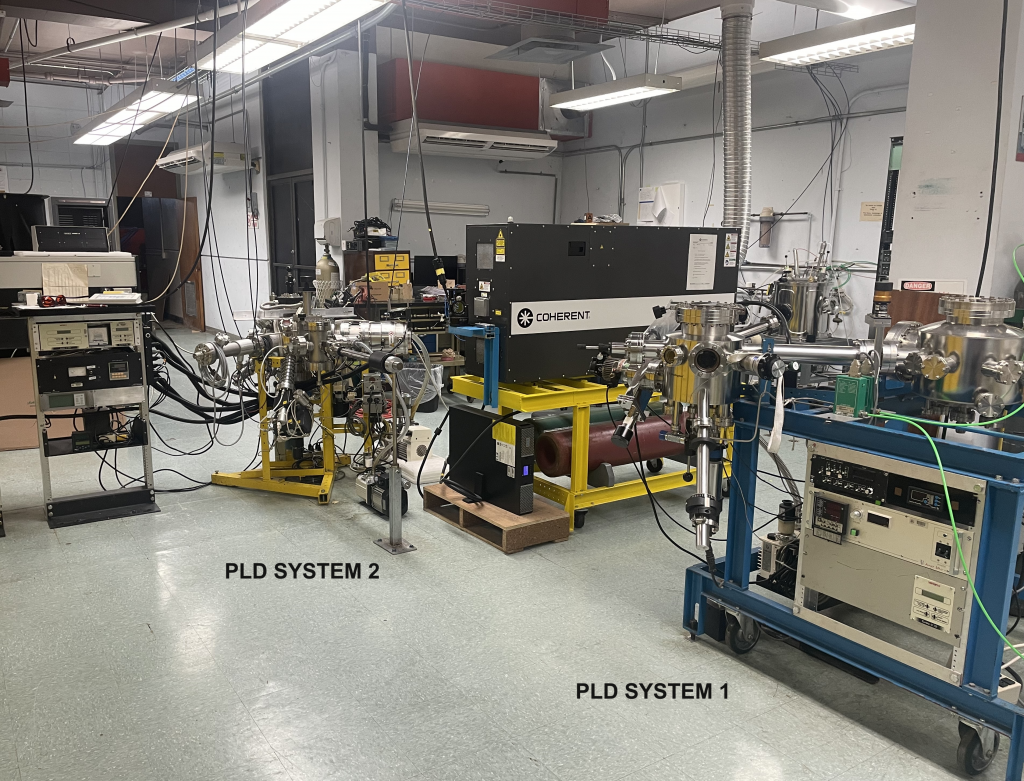
PLD system # 2. Dedicated for growth of nitride semiconductors. UHV main chamber with horizontally placed targets, load-lock chamber, low-energy atomic nitrogen beam source (RF N2 cracker, Mantis Deposition) for nitridation of growing films, residual gas analyzer, 4-pocket mini electron gun evaporation source (Oxford Applied Research), and PID-controlled sample heater reaching over 800°C in vacuum.
Pulsed Laser Deposition
PLD system # 1. Used mainly to deposit oxide materials. Includes 4-target revolving turret with computer-controlled stepping motor for deposition of multilayers, two mass flow controllers, residual gas analyzer, and PID-controlled substrate heater capable of reaching 800°C in O2 atmosphere.
PLD system # 2. Dedicated for growth of nitride semiconductors. UHV main chamber with horizontally placed targets, load-lock chamber, low-energy atomic nitrogen beam source (RF N2 cracker, Mantis Deposition) for nitridation of growing films, residual gas analyzer, 4-pocket mini electron gun evaporation source (Oxford Applied Research), and PID-controlled sample heater reaching over 800°C in vacuum.

Magnetron Sputtering
Sputtering system # 1: UHV chamber with a magnetron sputtering gun (Angstrom Sciences, Onix-2) powered by a pulsed-dc supply (Advanced Energy, Pinnacle Plus),.
A smaller sputtering system houses two 2″ target dc magnetron guns, substrate heater compatible with oxygen atmosphere and powered by a PID controller, gas line with two mass flow controllers (for control of gas mixtures in reactive sputtering), and a vibrating quartz microbalance to monitor film thickness. This system is mainly used as an ancillary for deposition of metallic films for electrical contacts and related fabrication.
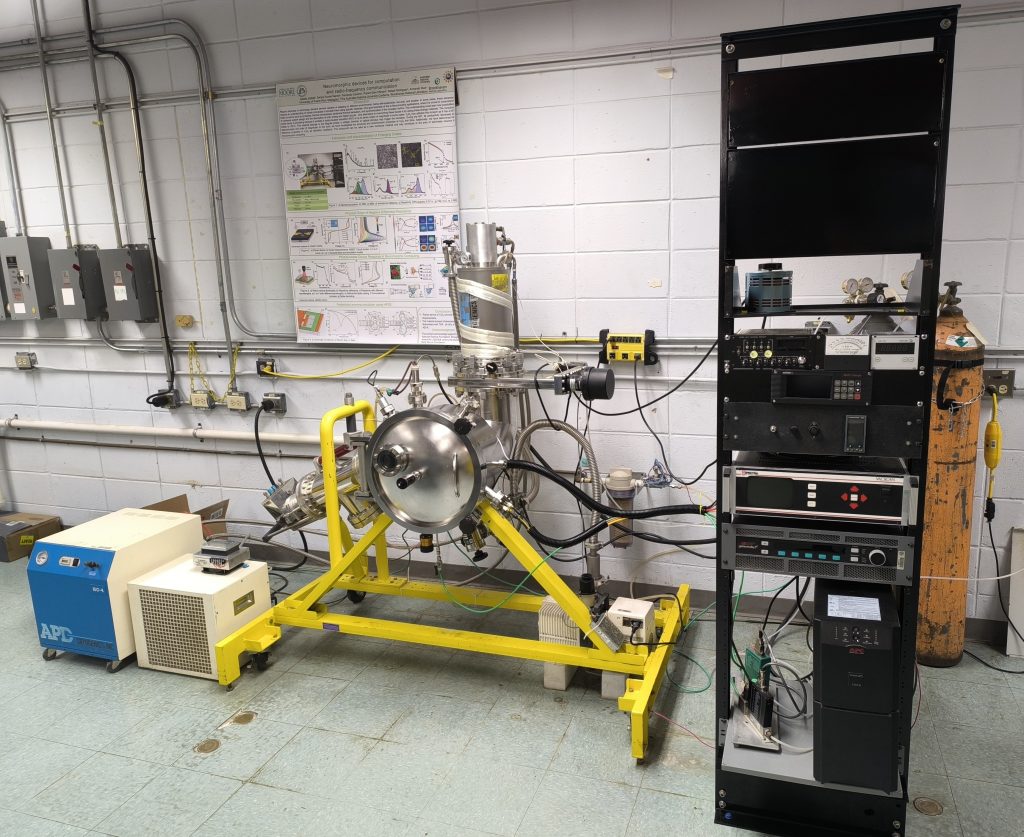
Other Fabrication Facilities
Other fabrication facilities in our lab include a spin coater, micronizing and ball mill grinders, hydraulic press and pellet dies, programmable furnaces, and a Kulicke & Soffa Model 4526 hybrid (thermocompression / ultrasound) bonder capable of attaching gold or aluminum wires or tapes to samples prepared with suitable bonding pads. The latter facilitates preparation of samples for testing and production of prototypes.
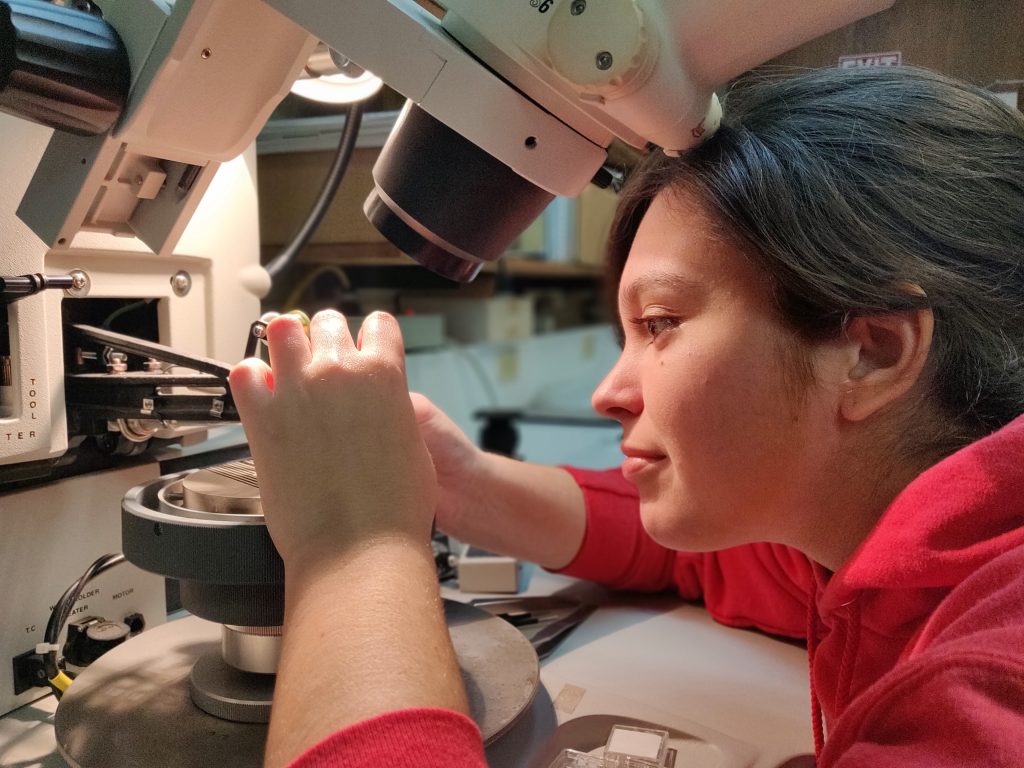
X-ray Diffraction
X-ray Diffraction: High-resolution XRD system (Bruker-AXS D8 Discover). This is a 4-circle diffractometer specially configured for thin film studies. The x-ray beam line includes a parabolic multilayer x-ray mirror for increased intensity and collimation. A 4-reflection Ge crystal (2-crystal, channel-cut) monochromator can be included in the input beam line for best resolution. The goniometer is a Huber 1/4-circle Eulerian cradle, giving the system 7 independent degrees of freedom (6 sample, 1 detector).
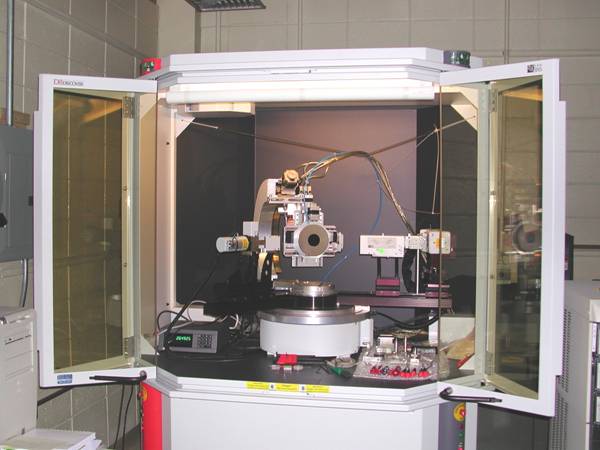
All motions are through computer-controlled steppers, allowing 0.0001° (0.36 arc-sec) resolution for θ and detector angles. Sample tilt and rotation can be controlled through -3°≤ χ ≤ 94° (with 0.001° resolution), and 360° (with 0.002° resolution), respectively. At the exit beam, a 2-reflection Ge 022 channel-cut crystal analyzer can be included. Also available is an attachment for grazing-incidence reflectometry measurements.
X-ray Diffraction
X-ray Diffraction: High-resolution XRD system (Bruker-AXS D8 Discover). This is a 4-circle diffractometer specially configured for thin film studies. The x-ray beam line includes a parabolic multilayer x-ray mirror for increased intensity and collimation. A 4-reflection Ge crystal (2-crystal, channel-cut) monochromator can be included in the input beam line for best resolution. The goniometer is a Huber 1/4-circle Eulerian cradle, giving the system 7 independent degrees of freedom (6 sample, 1 detector). All motions are through computer-controlled steppers, allowing 0.0001° (0.36 arc-sec) resolution for θ and detector angles. Sample tilt and rotation can be controlled through -3°≤ χ ≤ 94° (with 0.001° resolution), and 360° (with 0.002° resolution), respectively. At the exit beam, a 2-reflection Ge 022 channel-cut crystal analyzer can be included. Also available is an attachment for grazing-incidence reflectometry measurements.

Micro
AFM/STM
AFM/STM Park Scientific Instruments microscope, with 100μm and 10μm scanners, is available in our laboratories for observation and measurements of surface structure. Other characterization equipment includes a Nikon microscope with DIC capability, interferometric objectives, and a cooled CCD digital camera; an Alpha-Step-100 stylus profilometer for film thickness measurements.
Surface profilometer. Tencor Alpha-Step-100 stylus profilometer is available for surface roughness and film thickness measurements.
scopy
Optical microscopes
Other characterization equipment includes a Nikon microscope with DIC capability, interferometric objectives, and a cooled CCD digital camera; and Carl Zeiss microscopes equipped with interferometric objectives and CCD acquisition systems for material observation. This allows rapid inspection, visually and with micrographs, of surface quality of deposited films.
Microscopy
AFM/STM
AFM/STM Park Scientific Instruments microscope, with 100μm and 10μm scanners, is available in our laboratories for observation and measurements of surface structure. Other characterization equipment includes a Nikon microscope with DIC capability, interferometric objectives, and a cooled CCD digital camera; an Alpha-Step-100 stylus profilometer for film thickness measurements.
Surface profilometer. Tencor Alpha-Step-100 stylus profilometer is available for surface roughness and film thickness measurements.
Optical microscopes
Other characterization equipment includes a Nikon microscope with DIC capability, interferometric objectives, and a cooled CCD digital camera; and Carl Zeiss microscopes equipped with interferometric objectives and CCD acquisition systems for material observation. This allows rapid inspection, visually and with micrographs, of surface quality of deposited films.
Other Facilities
Electronic characterization of materials (4-point resistivity, Hall effect, etc.) can be performed in our laboratory at temperatures down to 10 K and applied magnetic fields over 1 T. The setup includes Keithley Instruments current source, nanovoltimeter, picoamperimeter, and Hall effect card and switch system, a water-cooled electromagnet with variable pole gap and 75 Amp power supply (GMW associates), a closed cycle He refrigerator (CTI), Displex cryostat (Advanced Research Systems), and cryogenic temperature controller (Lake Shore Cryotronics). This apparatus is completely computer-controlled under a house-developed LabView code. An LCR-meter allows measurements of dielectric permittivities in the frequency range from 10 Hz to 2 MHz (Quad Tech Model 7600). For measurement of piezoelectric properties of films we have a house-built electronically compensated interferometer capable of sub-Angstrom resolution. Woollam 44-wavelength ellipsometer allows determinations of thickness and refractive index of thin films or multilayers.
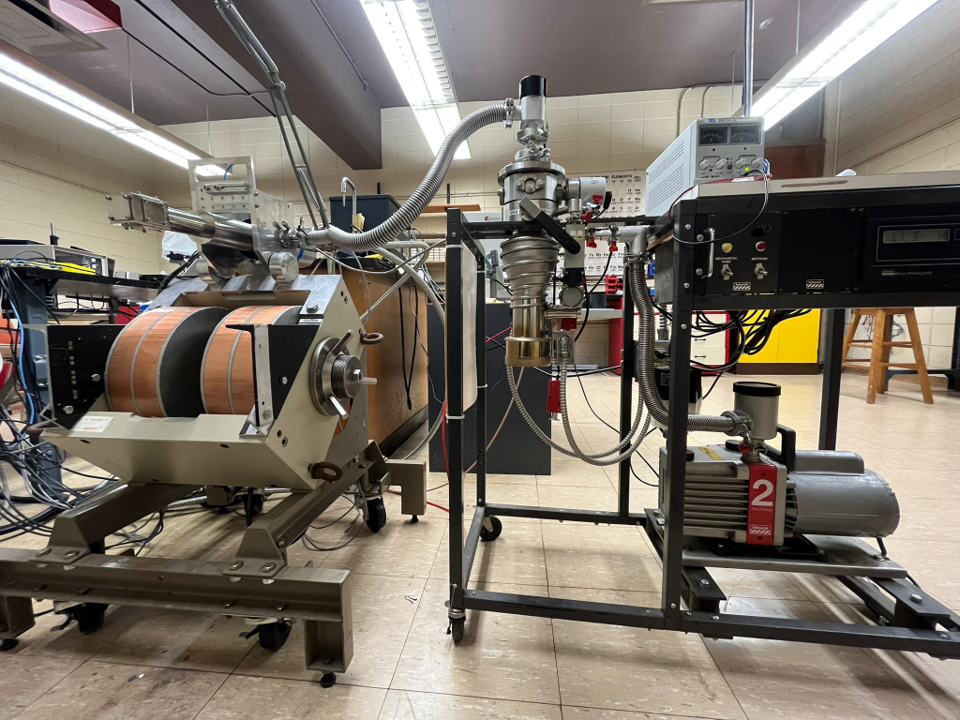
Electronic characterization of materials (4-point resistivity, Hall effect, etc.) can be performed in our laboratory at temperatures down to 10 K and applied magnetic fields over 1 T. The setup includes Keithley Instruments current source, nanovoltimeter, picoamperimeter, and Hall effect card and switch system, a water-cooled electromagnet with variable pole gap and 75 Amp power supply (GMW associates), a closed cycle He refrigerator (CTI), Displex cryostat (Advanced Research Systems), and cryogenic temperature controller (Lake Shore Cryotronics).

Other Facilities
This apparatus is completely computer-controlled under a house-developed LabView code. An LCR-meter allows measurements of dielectric permittivities in the frequency range from 10 Hz to 2 MHz (Quad Tech Model 7600). For measurement of piezoelectric properties of films we have a house-built electronically compensated interferometer capable of sub-Angstrom resolution. Woollam 44-wavelength ellipsometer allows determinations of thickness and refractive index of thin films or multilayers.
